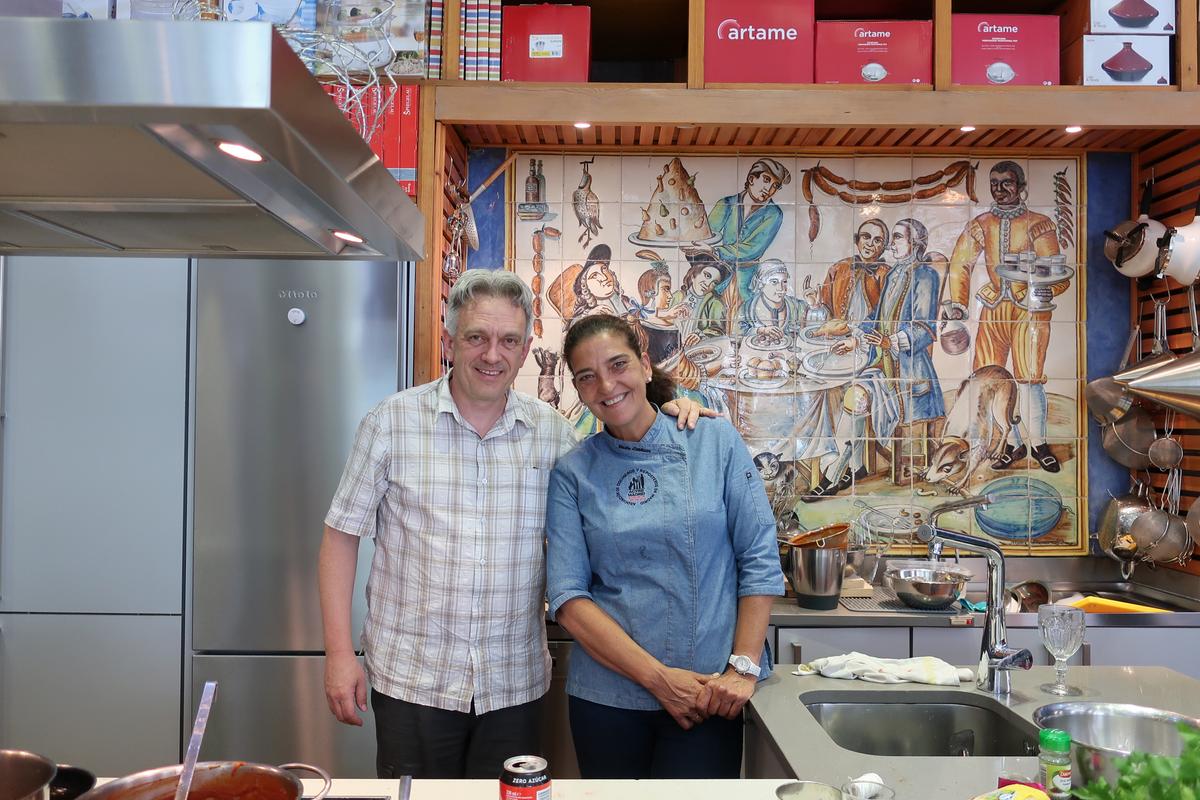As I get older I find I am less drawn to “climbing the pyramids” when I travel, and more inclined to planning my trips around “what’s to eat there?” After having decided on Madrid as our next destination, my wife Tip and I booked a cooking course at Alambique before I’d even finalized the hotel arrangements. Spanish food? I’m all in.

Chef, author, and instructor María Jiménez-Latorre, with Kevin Revolinski. Kevin Revolinski





